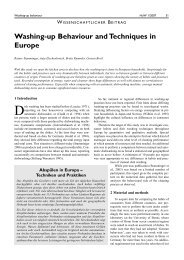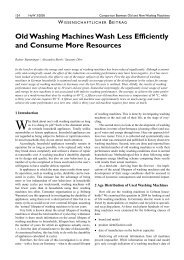Development of a novel mechatronic system for mechanical weed ...
Development of a novel mechatronic system for mechanical weed ...
Development of a novel mechatronic system for mechanical weed ...
Create successful ePaper yourself
Turn your PDF publications into a flip-book with our unique Google optimized e-Paper software.
Summary<br />
The third part <strong>of</strong> the work was development and testing <strong>of</strong> the physical<br />
prototype realised using a servo motor in laboratory conditions. The servo motor<br />
was sized according to the experimental measurement <strong>of</strong> the torque in field<br />
conditions. The motor was selected in combination with transmission gear to<br />
cover the full range <strong>of</strong> speeds and torques which were expected in laboratory<br />
experiments. The experimental research was done in a soil box with different<br />
soil types. Forward-backward moving, vertical and horizontal positioning <strong>of</strong> the<br />
hoeing tool above the soil box was realised through a carrier with a separate<br />
electro motor.<br />
The servo <strong>system</strong> was operated in a mode with direct s<strong>of</strong>tware control providing<br />
rotational speed adjustment according to the <strong>for</strong>ward speed <strong>of</strong> the carrier, intra-<br />
row distance between successive crop plants and the observed angular position<br />
<strong>of</strong> the arms. The controlling algorithm and s<strong>of</strong>tware solution were developed in<br />
the Labview® environment. The main task <strong>of</strong> the controlling s<strong>of</strong>tware was<br />
permanent calculation, checking and change <strong>of</strong> the recent rotational speed <strong>of</strong><br />
the hoeing tool in real time. The s<strong>of</strong>tware solution used an expanded version <strong>of</strong><br />
the s<strong>of</strong>tware previously developed <strong>for</strong> detection <strong>of</strong> the plants’ centre position.<br />
For well-timed execution <strong>of</strong> different subfunctions <strong>of</strong> the s<strong>of</strong>tware in the time<br />
schedule, the optimal distance between the plant detection unit and the plane in<br />
which the hoeing tool is positioned was discussed and a methodology <strong>for</strong> its<br />
calculation was proposed. The speed controlling algorithm was thoroughly<br />
explained. Finally, the controlling algorithm, stability and robustness <strong>of</strong> the<br />
prototype were comprehensively evaluated by experimental testing. Tests were<br />
done with continuous and changeable <strong>for</strong>ward speed on the crops rows with<br />
200 mm and 400 mm intra-row distances.<br />
Tests have proved that depending on the angular adjustment <strong>of</strong> the duckfoot<br />
knives an uncultivated area big enough to avoid damaging <strong>of</strong> the plants can be<br />
left around the plants during the intra-row <strong>weed</strong>ing with the developed <strong>system</strong>.<br />
The <strong>system</strong> is able to autonomously adapt the rotational speed <strong>of</strong> the hoeing<br />
tool in case <strong>of</strong> non-intensive <strong>for</strong>ward speed change. After intensive <strong>for</strong>ward<br />
speed change, depending on the intensity level, several plants could be<br />
123





